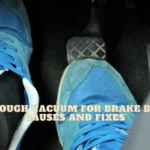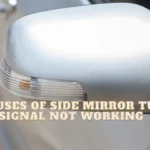As a driver or car owner, one thing you’ll ever dread is experiencing an engine misfire at idle. If your engine misfires, the course of wisdom is to find out the underlying cause promptly. If neglected, an engine misfire can create a series of other problems. What causes engine misfires? What are the symptoms, and what should you do if your engine misfires? You will find answers to those questions in this guide.
Misfire at Idle
Generally, a misfire is a situation whereby one or more cylinders do not produce power due to some reasons. This leads to slower acceleration or brief loss of power in the engine. An engine misfire at idle can be an aftermath of an incorrect air-fuel mixture, faulty oxygen sensor, vacuum leaks or a faulty catalytic converter.
A misfire can also occur when the fuel injector needs cleaning. During a misfire, the check engine light may flash to indicate possible catalyst damage. The engine may lack some power, thereby causing a buck or jerk and rough idle.
There are three basic things your vehicle’s engine needs for full-cylinder combustion. They are spark, compression, and fuel/air mixture. In the occurrence that one of these is not involved in the process, the cylinder combustion will not be complete. So, no power will generate.
What are the Common causes of Engine Misfires?
Incorrect air-fuel mixture
The primary cause of engine misfires at idle but not under load is incorrect air-fuel mixture. What happens? Your car will drive perfectly well but shows symptoms of a little misfire at idle. A faulty oxygen sensor is a major culprit for air-fuel mixture.
Gasket/vacuum lines leak
If the gasket between the intake manifold and the cylinder begins to leak, it causes a lean air-fuel mixture. This is because the leaks allow for excess air inside the combustion chamber.
Failed or dirty fuel injectors
If the fuel injector is faulty or malfunctioning, it may inject either excess or insufficient fuel into the combustion chamber. The result of this is a rich or lean fuel mixture.
Low fuel pressure
When the fuel pressure is low, the combustion chamber will not receive the right quantity of fuel. The fundamental cause of low fuel pressure can be a problem with the fuel filter, fuel pump or fuel pressurecontrol.
Engine sensor failure
A bad MAP sensor, MAF sensor and oxygen sensor can affect the air-fuel mixture in the engine. If the ratio of air to fuel is an imbalance, your car engine will misfire. A failing throttle position sensor can also be responsible for misfiring under acceleration.
Low engine compression
Compression is vital to complete cylinder combustion. If there is a problem in the interior part of the engine, it can result in low compression. In turn, low engine compression can affect the cylinder combustion process.
Bad spark plugs
A bad spark plug will fail to ignite during cylinder combustion, which often results in a misfire. This kind of misfire occurs during acceleration in which case the engine misfires under load when accelerating.
Failed ignition coil
If the ignition coil can no longer produce a strong spark, a misfire is often the outcome.
Common Signs that your Engine is Misfiring at Idle
- An engine misfire can trigger a change in the sound of your vehicle’s engine. So, if you notice an unusual sound from your car’s engine, it could be a symptom of misfiring.
- The check engine light is activated as soon as the ECM detects a recurring problem. A sparkling check engine light on your dashboard is likely a sign of an engine misfire.
- If your vehicle’s engine stalls at idle
- Another sign of misfire at idle is vibration. If you observe a serious unusual vibration in your vehicle when doing, that could be an indication of an engine misfire.
Steps You Can Take When Your Engine Misfires
- Check for vacuum leaks. A flammable spray can help you easily detect a vacuum leak while your engine is idling. Spray it around the intake manifold, and observe if the engine speed rises. If it does, it’s an indication of a leak.
- Carry out a compression test using a tester. If you discover a low compressor, inspect the valves, timing belts, pistons, and other engine parts.
- Use an OBD II scanner to find out the specific cylinder that is affected. The scan taken will also reveal if any of the engine sensors is faulty.
- Clean your fuel injector.
- Check the fuel pressure using a gauge. After connecting the gauge, start the engine and read the value. Compare it with the factory’s specs, and follow a maintenance schedule.
- Remove the ignition coil and spark plug on the affected cylinder and clean them. Replace them if need be.
FAQ
Can I drive a misfiring engine at idle?
No, do not drive while your engine is misfiring. It can create several other problems like low fuel economy, car stalling and engine damage.
What are types of engine misfires?
Generally, there are occasions of engine misfires. There is what we call the dead miss misfire in which case no form of combustion takes place at all in the engine. Another is a partial misfire which occurs when the combustion taking place in the engine is both insignificant and incomplete. The third type of engine misfire is the intermittent misfire. In this case, combustion only takes place indiscriminately or under certain conditions occasionally.
Final Thoughts
A misfire at idle occurs when an engine’s cylinder cannot produce power during cylinder combustion. The problem is often caused by vacuum leaks, low compression, low pressure, and more. If you suspect an engine misfire, or your car displays any of the signs above, rectify the issue as soon as possible. Otherwise, it can lead to severe engine damage and other expensive repairs.



